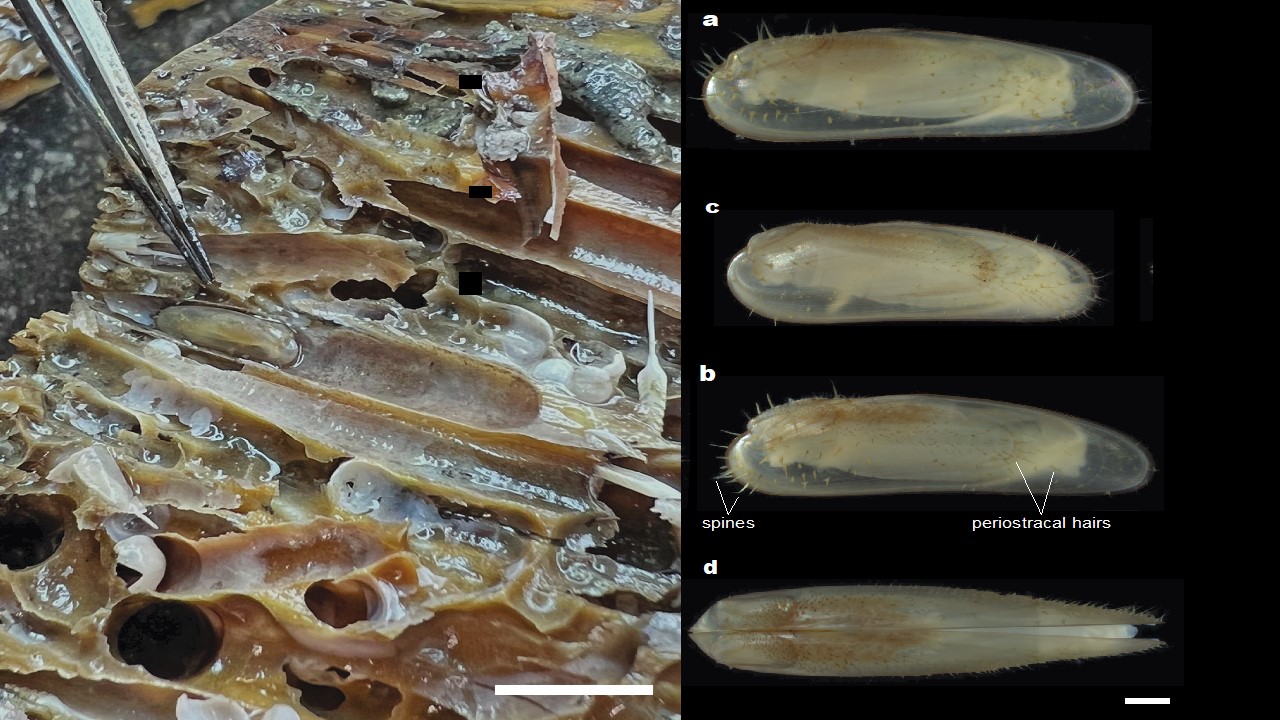This week, a publication by Ocean Genome Legacy researchers and colleagues announced the discovery of Vadumodiolus teredinicola, a new species of marine mussel.
This discovery includes several exciting firsts!

Left: Vadumodiolus teredinicola in life position within abandoned shipworm burrows. Right: morphology of additional V. teredinicola specimens. Scale bars 10 mm (left) and 1 mm (right). From Altamia et al. 2024.
The new species is a tiny marine mussel that can easily fit on the tip of your pinky finger. It is the first shallow-water member of a group of mussels previously known to live and reproduce only in the cold, dark, deep sea, at depths from 100 meters to more than 4,000 meters (300 feet to more than 13,000 feet). This group includes giant mussels that feed on toxic gases—hydrogen sulfide and methane—spew from deep-sea volcanic hot springs called hydrothermal vents. But the new species lives in warm, shallow water at just 18 meters (60 feet) along the Gulf Coast of Alabama.
The new species is also the first member of a new genus! The new species required a new genus because while it is a close cousin of the deep-sea species, it is not similar enough to fit in any known genus in the group.
This new species avoided discovery until now because it hides in an unusual place—inside the abandoned burrows of wood-eating bivalves known as shipworms. Hence, the new species’ name is teredinicola, Latin for shipworm dweller. It was discovered in wood from an ancient bald cypress forest buried and submerged under the sea during an ice age more than 60,000 years ago and only recently exposed by storm waves. So, V. teredinicola might also be the first living species discovered in ice age wood—but that is just a guess.
The new species is also the first to be named and described as part of the new Ocean Census program. Ocean Census is a global cooperative initiative that aims to use technology to accelerate the discovery of marine species, with the ultimate goal of discovering 100,000 marine species in the next decade. The Ocean Genome Legacy is one of the founding members of Ocean Census, and so this new species discovery gets the official designation of Ocean Census Species Number One!
Are you interested in helping discover more marine species? If so, please consider making a gift to support OGL.
